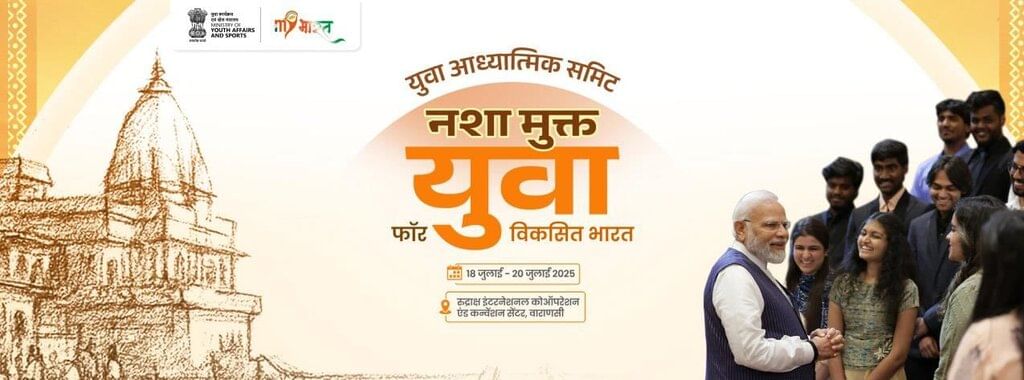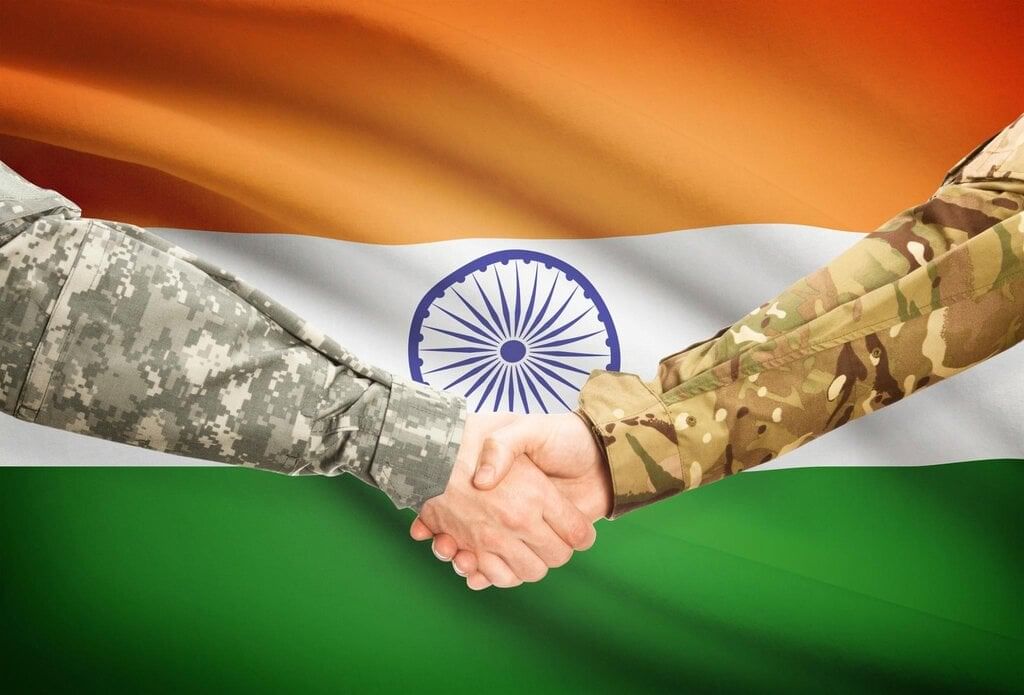PIB Summary - 17th July 2025 | PIB (Press Information Bureau) Summary - UPSC PDF Download
Nasha Mukt Yuva for Viksit Bharat Empowering Minds, Building the Nation

Introduction
- India is entering a new phase in its fight against drug abuse, with a focus on empowering youth to lead the charge.
- The initiative, called “Nasha Mukt Yuva for Viksit Bharat,” aims to create a drug-free and empowered nation by mobilizing spiritual, institutional, and grassroots forces.
Relevance
- GS 2 (Social Issues, Health)
- GS 3 (Internal Security)
Strategic Vision: Youth as the Torchbearers
- Demographic Dividend: With 65% of India’s population under 35 years old and an average age of around 28, the youth represent a core strength in the country’s journey towards progress during the Amrit Kaal.
- Youth-Centric Approach: Substance abuse is viewed not only as a health issue but also as a significant threat to national development.
Summit Highlights: Youth Spiritual Summit, Varanasi (18–20 July 2025)
- Theme: Nasha Mukt Yuva for Viksit Bharat
- “Kashi Declaration”:. youth-led national roadmap for a drug-free India.
- Institutional Convergence: Involvement of various ministries (Youth Affairs, Health, Culture, Social Justice), the Narcotics Control Bureau (NCB), AIIMS, spiritual organizations, and youth networks.
- Review Mechanism: Progress will be assessed in the Viksit Bharat Young Leaders Dialogue (VBYLD 2026).
Law Enforcement Outcomes (2024 Data)
Drugs Seized: ₹25,330 crore, a 55% increase from ₹16,100 crore in 2023.
- Synthetic Drug Crackdown: Increased interception of Methamphetamine, Mephedrone, Cocaine, and Hashish, with 4,134 kg seized from deep seas alone.
- Narco-Terror Nexus: Significant offshore seizures, including 3,132 kg (largest ever), 700+ kg of meth in Gujarat, and 82.53 kg of cocaine in Delhi.
Institutional Strengthening: NCB Reforms
- Expansion: Increase in Regional Offices from 3 to 7 and Zonal Offices from 13 to 30, with staff strength increased by 536.
- Nar-K9 Units: Deployed in 10 zonal offices.
- Inter-Agency Coordination: Integration of Navy, Coast Guard, BSF, and RPF under NDPS Act powers.
Policy and Governance Tools
- 4-Tier NCORD Mechanism: Coordination at Apex, State, District, and Local levels.
- Anti-Narcotics Task Forces: Establishment of dedicated teams in each State/UT.
- Darknet & Crypto Task Force: Monitoring digital drug trafficking at the MAC level.
- Forensics & Surveillance: National Forensic Support and Maritime Security Group established in 2022.
Public Engagement: Jan Andolan Elements
- Citizen Participation: Encouraging citizens to take digital pledges, volunteer for awareness and rehabilitation campaigns, and share intelligence with authorities.
- IEC Material: Development of visual, audio, and digital tools for institutions and public places.
- Tech Platforms: Utilization of NMBA App for real-time updates, MANAS Helpline (1933) for 24/7 drug-related support, and NMBA Portal for FAQs, pledges, and expert videos.
Welfare-Oriented Response
- Nasha Mukt Bharat Abhiyaan (NMBA): Launched on August 15, 2020, this initiative has sensitized over 16.5 crore people, treated 27.76 lakh individuals, established 730+ free rehab centres, and trained over 10,000 Master Volunteers.
- National Action Plan for Drug Demand Reduction (NAPDDR): Includes 342 In-Patient Rehabilitation and Counselling Centres (IRCAs), 47 Community-based Prevention and Life Skills Initiatives (CPLIs), 74 Outpatient Drop-in Centres (ODICs), 83 Anti-Drug Task Forces (ATFs), and 53 Drug Dependence Assessment Centres (DDACs) in government hospitals.
Legal and International Framework
- NDPS Act, 1985: This is India’s principal anti-drug legislation, which includes strict penalties and rehabilitation provisions.
- Global Cooperation: India is engaged in bilateral talks with Myanmar, Iran, and Bangladesh, and is involved in international maritime and land route monitoring to combat drug trafficking.
Conclusion: India’s Vision for a Drug-Free Future
- Aligns with the Prime Minister’s vision of a fit and self-reliant youth contributing to a developed India (Viksit Bharat).
- Combines various elements such as policy, enforcement, community mobilization, and spiritual leadership.
- Shifts from a top-down policing approach to a youth-led national movement against substance abuse.
India’s Commitment to Global Security

FATF and India's Role in Combating Financial Crimes
Introduction
- India has enhanced its anti-money laundering and counter-terrorism financing frameworks in line with FATF standards, reflecting its commitment to securing financial systems from global threats.
- The Financial Action Task Force (FATF) is a global standard-setter established in 1989 to combat money laundering, terrorist financing, and proliferation financing.
FATF: Overview
- Established. 1989 at the G7 Summit in Paris.
- Mandate. Set global standards to combat money laundering, terrorist financing, and proliferation financing.
- Reach. 40 members and over 200 jurisdictions committed to FATF recommendations.
India and FATF
- Observer Status. India was granted observer status in 2006.
- Full Membership. India became a full member on June 25, 2010, being the 34th member.
- Legal Framework. India’s legal framework includes the Prevention of Money Laundering Act (PMLA) of 2002 and the Unlawful Activities (Prevention) Act (UAPA) of 1967, demonstrating a zero-tolerance stance on terror financing and money laundering.
FATF Grey and Black Lists (As of June 13, 2025)
- Grey List. 25 countries, including Nepal, Nigeria, and South Africa, are under increased monitoring.
- Blacklist. 3 nations — North Korea, Iran, and Myanmar — are under call for action.
- Reforms Achieved. 86 of 139 reviewed countries have addressed AML/CFT deficiencies.
FATF Reports (June–July 2025)
1. “Complex Proliferation Financing and Sanctions Evasion Schemes”
New-age PF Threats. Highlighted the use of virtual assets, maritime loopholes, and beneficial ownership obfuscation in proliferation financing.
India’s Best Practices. Recognized for multiple coordination mechanisms in proliferation financing.
Global Red Flags. Notable incidents include DPRK’s cyber-heist of $1.5 billion from ByBit exchange and Pakistan’s National Development Complex flagged for proliferation financing links.
Compliance Gap. Only 16% of assessed countries are effective in Immediate Outcome 11 (PF control), with India being among the few with high or substantial effectiveness.
2. “Comprehensive Update on Terrorist Financing Risks”
Key Trends. Increased state-sponsored terrorism, with India flagging Pakistan in its National Risk Assessment (NRA) 2022, and the rise of regional decentralization and fragmented terrorist financing networks.
Emerging TF Methods. Use of crypto, e-commerce, mobile wallets, and online crowdfunding for terrorist financing. A case study in India highlighted the use of e-commerce for procurement by terrorists.
Criminal Nexus. Terrorists are increasingly using proceeds from human trafficking, drug smuggling, and extortion, with microfinancing of lone actors through legal income sources. A case study in India illustrated a lone-wolf attack funded via VPN and online payments.
New-Age Platforms. Utilization of gaming and streaming platforms for income and recruitment, with social media and encrypted apps used for donations and propaganda.
Key Policy Challenges and FATF Recommendations
- Weaknesses Identified. The FATF identified weaknesses in ineffective investigations, poor cross-border cooperation, and gaps in the use of financial intelligence.
- Recommendations. The FATF recommended strengthening regulation for virtual assets and social media, enhancing public-private partnerships, integrating risk assessments into national frameworks, and strengthening regional cooperation and enforcement networks.
India’s Global Role and Commitments
- Recognition by FATF. India has been recognized by the FATF for its high compliance in detection of proliferation financing (Immediate Outcome 11).
- Advocacy. India advocates for a coordinated response to cyber-financing threats and highlights Pakistan’s continued risk in terrorist financing, which is important for India’s counter-terror diplomacy.
- Contribution. India actively contributes case studies and strategic insights in FATF reports, showcasing its commitment and role in the global fight against financial crimes.
Conclusion
- The FATF’s recognition of India’s robust legal and institutional mechanisms highlights India’s leadership in the global fight against financial crimes.
- By aligning national policy with international standards, India reinforces its role in safeguarding global peace and security.
FAQs on PIB Summary - 17th July 2025 - PIB (Press Information Bureau) Summary - UPSC
| 1. What is the significance of the "Nasha Mukt Yuva" initiative in the context of nation-building? |  |
| 2. How does the "Nasha Mukt Yuva" initiative align with India's vision for global security? |  |
| 3. What strategies are employed in the "Nasha Mukt Yuva" initiative to empower youth? |  |
| 4. In what ways can a drug-free youth contribute to a developed nation? |  |
| 5. What role do educational institutions play in the "Nasha Mukt Yuva" initiative? |  |
















